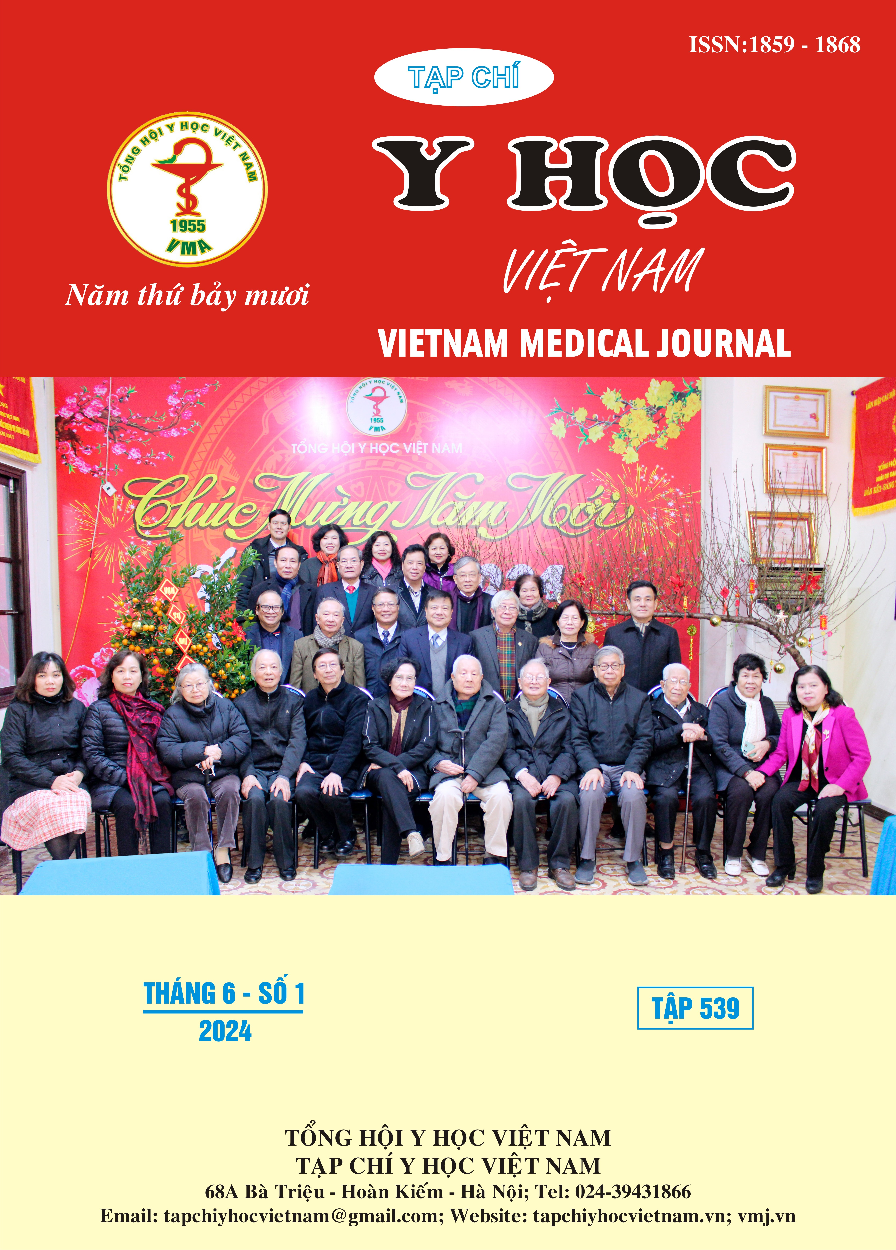CLINICAL PREDICTIVE FACTORS OF COMPLICATED APPENDICITIS IN ADULTS
Main Article Content
Abstract
Background: Acute appendicitis (AA) is a common surgical disease in clinical practice, in which the surgeon needs to distinguish AA with complications and without complications. Building a predictive model for AA with complications to help the clinicians predict disease status and decide on necessary treatment. We conduct research with two main objectives: - Determine the clinical signs, and CT images related to complicated AA. - Build a multivariable model to predict complicated AA with clinical factors, and CT images. Materials & Methods: A case-control study, retrospectively study on cases of complicated AA that were operated at Trung Vuong hospital from January 2017 to March 2019. Collect clinical factors and computed tomography images related to complicated AA. Using logistic regression analysis to conducting a multivariate model of predictors of complicated AA. Results: 205 cases of AA that met the sampling criteria were included in the study. Through data analysis, there are 2 clinical factors (pain duration more than 48 hours and white blood cell count ≥ 13K/ul) and 9 signs on CT images related to the status of complicated AA. The logistic regression model predicts the status of complicated AA including the following factors: age ≥ 45 years, pain duration > 48 hours, white blood cell count ≥ 13K/ul, peri-appendiceal infiltrates, presence of fecal stones, paralytic ileus and gas in the lumen of the appendix. Conclusion: It is necessary to consider the status of complicated AA in patients ≥ 45 years old, with pain duration > 48 hours, with leukocytosis 13 k/uL and the following signs on X-ray film: complete infiltrate RT circumference, presence of fecal stones, paralytic status, presence of air in the appendix lumen.
Article Details
Keywords
: Uncomplicated acute appendicitis, predictor.
References
2. Livingston, E.H., et al., Disconnect between incidence of nonperforated and perforated appendicitis: implications for pathophysiology and management. Ann Surg, 2007. 245(6): p. 886-92.
3. Cobben, L.P., A.M. de Van Otterloo, and J.B. Puylaert, Spontaneously resolving appendicitis: frequency and natural history in 60 patients. Radiology, 2000. 215(2): p. 349-52.
4. Di Saverio, S., et al., WSES Jerusalem guidelines for diagnosis and treatment of acute appendicitis. World Journal of Emergency Surgery, 2016. 11(1): p. 34.
5. Di Saverio, S., et al., Diagnosis and treatment of acute appendicitis: 2020 update of the WSES Jerusalem guidelines. World J Emerg Surg, 2020. 15(1): p. 27.
6. Atema, J.J., et al., Scoring system to distinguish uncomplicated from complicated acute appendicitis. Br J Surg, 2015. 102(8): p. 979-90.
7. Bhangu, A., et al., Acute appendicitis: modern understanding of pathogenesis, diagnosis, and management. Lancet, 2015. 386(10000): p. 1278-1287.
8. Salminen, P., et al., Five-Year Follow-up of Antibiotic Therapy for Uncomplicated Acute Appendicitis in the APPAC Randomized Clinical Trial. Jama, 2018. 320(12): p. 1259-1265.
9. Vons, C., et al., Amoxicillin plus clavulanic acid versus appendicectomy for treatment of acute uncomplicated appendicitis: an open-label, non-inferiority, randomised controlled trial. Lancet, 2011. 377(9777): p. 1573-9.
10. Salminen, P., et al., Antibiotic Therapy vs Appendectomy for Treatment of Uncomplicated Acute Appendicitis: The APPAC Randomized Clinical Trial. JAMA, 2015. 313(23): p. 2340-2348.


